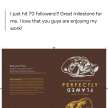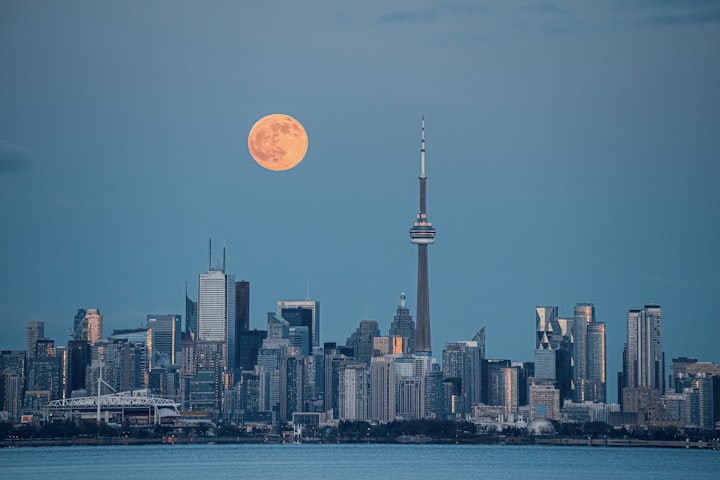Sub-Toronto Mix
The fluffy, dreary, darkened clouds seep over the sky heralding the advent of another storm. They’ve become common place now, in 2221. Man has scorched the earth with overpopulation and industry. Now, the sweltering heat of the day and freezing cold of the twilight have dispersed the population into pockets of living space. The largest populace continues to be in large urban cities that have a history in tourism, which no longer exists. Today, if and when you decide to visit a historic place, beware and be prepared!
The skies have lost their bluish hue and turned a continuous dirty gray. The people now live underground because of the extreme climate. I live in Toronto, formerly known for its greenery, the CN Tower, and the influx of many hopeful immigrants. Today, my family and I live in the city underneath the subway, which was used to transport citizens to work. The city itself is made of individual caverns that are decorated with antiques, some beautiful and well kept, while others are in disrepair and lack basic hygiene. My mom, Sara, has been guiding me, all my life, in the direction of always choosing friends who live in ‘clean-ish’ spaces, in order to protect us from spreading diseases that are rampant in unhygienic areas. Our part of the city is peppered with some maple trees, peonies, and hydrangeas. Those colors light up our darkened world.
My friend, Adam, and I went exploring the closed off areas of the city above, on an unusually cool day. We walked on the cracked pavements and streets searching for something, anything that would teach us about out predecessors, and how they lived. As we walked, we saw many buildings, skyscrapers that peppered the horizon of the downtown area. We later learned that the tallest and thinnest of those buildings was the CN Tower that held the record for the world’s tallest building for over three decades, and was a touristic attraction over a century before the climate took a turn to the impossible. The downtown area used to bustle with life, people, trains, street cars, busses, cars, bikes, and many other modes of transportation. Today, all we have are trucks, busses, and very few cars that are used by the rulers of each part of the underground city. Adam and I have gotten into calling it the Sub-Toronto Mix. Our reasoning was sound, I think, for 15 year olds anyway: it’s below Toronto and has a mixture of classes, from workers, to mechanics, farmers, teachers, engineers, politicians, all from varied cultural backgrounds, that each group has kept alive by using parts of their mother tongue and culture that were preserved by their ancestors. Their predecessors had actually lived in pre-apocalyptic Toronto, in 2050, some thirty years after the great Covid pandemic that killed millions of people.
As we journeyed within the above city, we passed a huge mall whose name seemed to have fallen off with the passing years. We passed through a ‘park’ area that had bikes strewn around, some rusty, some broken, while very few were functioning. We picked the best two, luckily one was blue, my favorite color, the other was white, Adam’s favorite. With wheels, we could now ride faster outside the city limits into a magical place called “Black Creek Village”. On the way there, we encountered the beginnings of new vegetation growth and signs that, not long ago, others had passed by the area before us. We trudged on, headless of the possibility of danger to ourselves or our families’ safety.
The road was long and treacherous, filled with overturned cars, destroyed furniture, and so much more that reflected the civilization that had been established and blossomed there so long ago. The farther west we went, the greater the variety of vegetation we saw. As adolescents, Adam and I, could only name the maple tree, a few flowers, and weeds. The buildings became smaller, with fewer floors, or a series of eight attached houses, or in more spacious and affluent areas, the houses were individual units with some yellowish grass in the front and back. Finally, we passed a cluster of buildings named, Y K U VE TY. We’d heard that was a well-known university in the twenty and twenty first centuries. We moved on and found a small village with wooden houses, barns, a mill, a milking area, a butter churning area, and a bee area. One of those structures had a name, B A K C E K P ON R VI G . When we entered, the complete name was blazoned on the wall that closed off a spacious area, Black Creek Pioneer Village. We continued inside more cautiously, trying not to make a sound for fear that others may be there already.
The entrance was large and inviting, although dusty. There were posters in frames everywhere. Mostly, they were black and white photographs of people doing a variety of jobs, milking, making butter, soap, candles, even cooking on the hearth or fireplace. Adam told me to follow him, and we took a right turn where we found a large treasure trove of books. We divided them in tow piles and sifted through them. We found books about farming and how to use homemade fertilizer to make the harvest richer and more abundant. Those ‘How to …’ books, we stacked in a separate pile so that we could take them home with us.
As we sifted through more books, we discovered a few detailing some historic events like: Hiroshima, Siberia’s nuclear explosion, the Covid pandemic, and much more. For some reason I couldn’t fathom, those three books were the one ones that grabbed my attention the most, so I prepared a pack for them that would protect them from the elements. As it had gotten too late to travel back to our homes, Adam searched for things for us to sleep on, while I searched for something to heat our food. Adam found a room filled with mattresses, duvets, pillows, and quilts. We took the covers outside to air them to get rid of the musty smell that had been embedded into them over the years of being packed away in a closet. We cleaned the floor of the library enough to remove the majority of the dust, so we can sleep more comfortably.
We turned on a flashlight after sundown so that we could continue our readings. Feeling through the Hiroshima book, I noticed that there’s an impression of a heart on the cover, which intrigued me. I opened the book, and I heard the clinking sound of something metallic hitting the floor. I was ecstatic when I found a shiny, beautifully engraved heart shaped locket with an inscription on the back. The opening mechanism was stuck, and I didn’t want to damage it, but I was struck by the engraved quotation on the back: “Never let hope die, or your humanity dies.” My interest was driven higher by the inscription, so I started skimming through the book. From my limited understanding of biology and physics, I understood the devastation of the bomb and its effects on the people there, as well as the ecosystem that mutated because of it. Interestingly, the author focused on the importance of community helpfulness and support, as well as acceptance of those who were disfigured or became paralyzed because of the bomb. Moreover, I came to realize that humanity and hope are irrevocably intertwined, one can’t survive without the other.
As I fell asleep, my dreams revolved around forests and animals, I’d just read about, that would roam our streets in the very near future. Beside those forests, man moved back out of the underworld and enjoyed the sunlight, breezes, and silky waterways that surround our lands. My idyllic Eden encompassed people of all races helping to support one another, being one hand that combats all obstacles that man has to face, from food, to wars, racism, injustice, and the basic human need to be love for oneself regardless of race or religious belief.
About the Creator
Malak kalmoni Chehab
I'm Canadian writer and poet, who is an introvert. I was raised in 2 war torn countries before moving to Canada as a teen. having witnessed injustice, inequality, prosecution, & racism, I wished to impart my experiences.







Comments
There are no comments for this story
Be the first to respond and start the conversation.